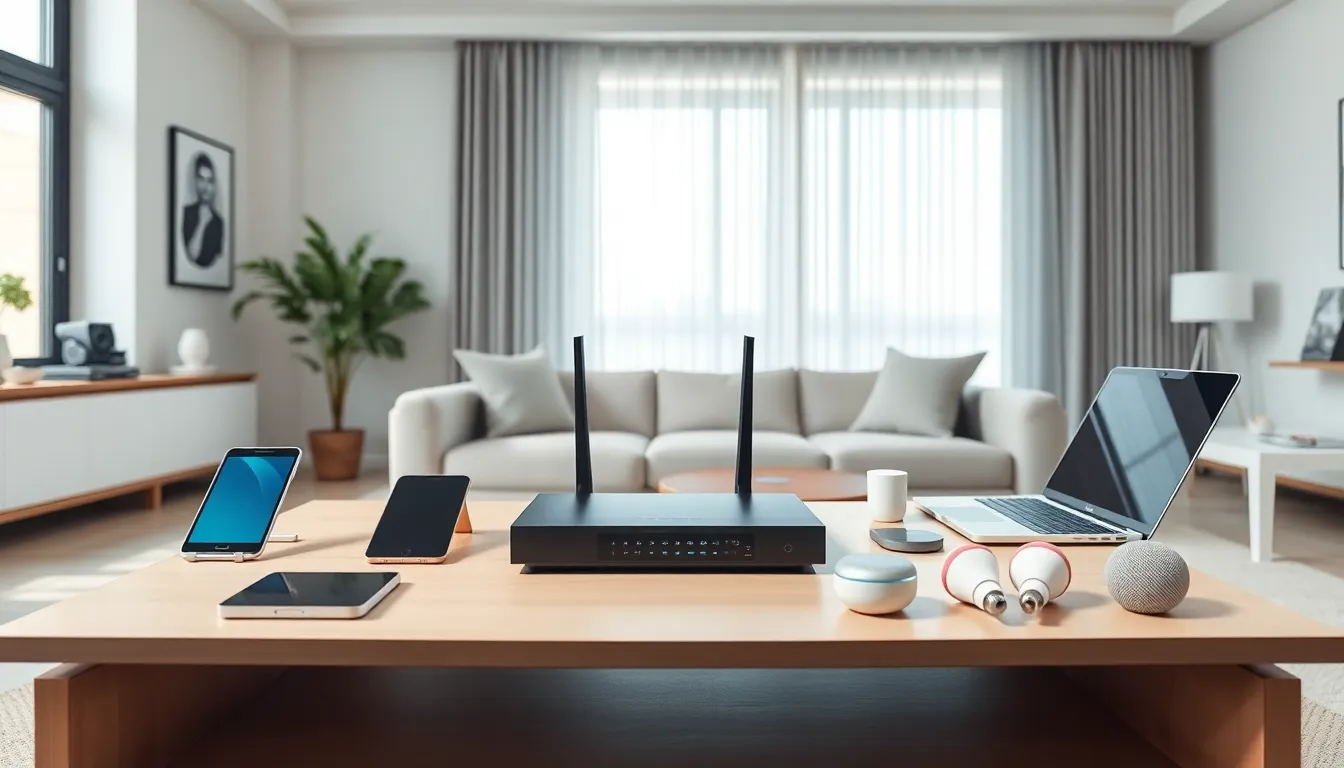Table of Contents
ToggleImagine this: you’re binge-watching your favorite show when the Wi-Fi suddenly drops out, leaving you stuck on a cliffhanger. Frustrating, right? This is where a solid home networking service swoops in to save the day. In today’s tech-savvy world, a reliable home network isn’t just a luxury, it’s a necessity. From streaming and gaming to remote work, a well-established home network ensures consistent connectivity for all your devices. Ready to jump into the world of home networking? Let’s untangle this web.
What Is Home Networking Service?

Home networking service refers to the setup, management, and maintenance of a communication infrastructure that connects various devices within a household. Think of it like the invisible spider web connecting your smartphones, tablets, laptops, and smart home gadgets. In more technical terms, it includes routers, switches, access points, and even network cables. This service enables devices to talk to each other and access the internet seamlessly. Without it, you might as well be living in a cave without Wi-Fi.
The concept of home networking has evolved dramatically. A basic configuration might involve a single router connected to one or two devices. But, modern homes often boast multiple devices requiring robust networks to manage the increasing demand for bandwidth. Get ready for high-definition streaming, video conferencing, and online gaming all at the same time, without a hitch.
Benefits of Home Networking Services
Embracing home networking services brings a treasure trove of benefits. First and foremost, it enhances internet connectivity throughout the home. No more dead zones: from the basement to the attic, users enjoy lightning-fast connections.
Also, a well-structured home network boosts productivity. Remote work can be a challenge unless your network supports stable connections for video calls and large file transfers. Also, home networking facilitates the integration of smart home devices. Users can control everything from security systems to smart thermostats from a single platform, offering convenience and enhanced security.
Security is another significant advantage. A secured home networking service helps protect sensitive data from cyber threats. With the rise of hacking incidents, ensuring a robust network helps keep valuable information under wraps. Finally, investing in a home networking service saves time and reduces stress while troubleshooting connectivity issues, allowing users to focus on what truly matters.
Types of Home Networking Services
Not all home networking services are created equal: they come in various types tailored to meet different needs. Here’s a rundown:
- Wired Networking: This type uses cables (like Ethernet) to connect devices directly to the router. It’s often considered the gold standard for speed and reliability, perfect for gaming or streaming.
- Wireless Networking: Wi-Fi has become the go-to for most households. It allows devices to connect without cumbersome wires, offering flexibility. But, users must consider signal strength, especially in larger homes.
- Mesh Networking: For those living in spacious residences, mesh networks distribute signals evenly, eliminating dead zones. These systems use multiple nodes to extend coverage throughout the home.
- Powerline Networking: Utilizing existing electrical wiring, this service provides connectivity throughout the house without extra wiring. It’s an effective alternative where Wi-Fi signals falter.
- VPN Services: Virtual Private Networks enhance security by encrypting internet traffic. This is vital for those who want to protect personal data while browsing.
How to Choose the Right Home Networking Service
Selecting the ideal home networking service can feel overwhelming given the plethora of options. But, a few key considerations can make the process smoother.
Start by assessing the household’s needs. Understanding how many devices will connect to the network is crucial. If the family consists of avid gamers and streamers, prioritize high-speed services. Evaluate the size of your home: larger spaces may benefit from a mesh network.
Consider the type of internet service provider (ISP) you’re currently using. Some providers offer networking plans that include equipment and technical support. It’s also wise to read customer reviews to gauge reliability and service quality. Finally, factor in budget constraints, because prices can vary significantly from one service to another.
Setting Up Your Home Networking Service
Setting up a home networking service requires a bit of planning, but it doesn’t have to be rocket science. First, begin with the router placement, central locations tend to offer the best coverage. Follow the manufacturer’s installation guide for connecting devices.
Next, configure your network settings. Change the default username and password for added security. Enabling WPA3 encryption elevates your network’s protection against intruders. Finally, test your network speed and coverage: using applications to scan for weak spots can help fine-tune any issues.
Remember, establishing a home network is a one-time effort, but maintaining it ensures smooth sailing. Regularly update firmware and periodically check connected devices to keep things secure.
Common Issues and Troubleshooting Tips
Even though meticulous planning, issues might still arise after setting up a home networking service. Here are some common problems and their solutions:
- Slow Internet Speeds: Start by rebooting the router. This simple fix can clear temporary glitches. Also, consider using an Ethernet cable for devices that demand high speed, such as gaming consoles.
- Dropped Connections: Check for interference from other electronic devices. Microwave ovens and cordless phones can disrupt Wi-Fi signals. Switching to a different channel may also help mitigate this issue.
- Device Connectivity Problems: If specific devices struggle to connect, ensure they are within range. Sometimes, forgetting the network and reconnecting can resolve this problem.
Keeping firmware up to date and having a solid troubleshooting checklist can save time and headaches.







